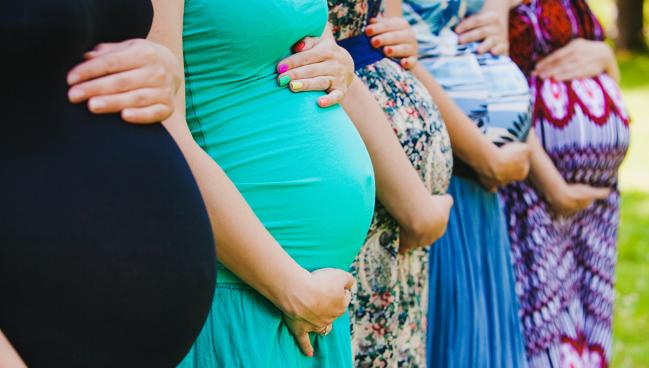CVD Risks After Pregnancy Linked to Prenatal Depression
Loss of access to care within a year wasn’t uncommon, pointing to the “crucial” need for Medicaid extension, says Mary N. Walsh.

Developing depression during pregnancy may increase the risk of being diagnosed with new CVD within 2 years of delivery, according to new data.
“Further research to confirm our findings and identify the causal pathway for these associations is critical to inform recommendations for cardiovascular screening and prevention during the postpartum period for patients with prenatal depression,” Christina M. Ackerman-Banks, MD (Yale University School of Medicine, New Haven, CT), and colleagues write in the Journal of the American Heart Association.
In the study of over 119,000 pregnancies, those with versus without a diagnosis of depression between 6 weeks of gestation and delivery were more likely to develop new ischemic heart disease, arrhythmia/cardiac arrest, cardiomyopathy, and hypertension. Although hypertension in pregnancy is known to increase the risk for developing CVD later in life, the association between depression and later CVD was shown even in its absence.
Ackerman-Banks and colleagues note that while a call to action from the American Heart Association has increased interest in postpartum CVD prevention efforts, there remain gaps in understanding “how prenatal depression and overall mental health disorders, both during and outside of pregnancy, affect CVD risk.”
Mary N. Walsh, MD (Ascension St. Vincent Heart Center, Indianapolis, IN), commenting on the findings for TCTMD, said they highlight once again that pregnancy and the postpartum period are times of vulnerability in women’s health.
“Physicians need to be aware of this data and screen their patients for depression, especially during pregnancy,” she said. “Inflammation leading to endothelial dysfunction is one of the proposed mechanisms that links depression and cardiovascular disease, and so it would not be unlikely that a similar etiology would pertain in pregnant people.”
Walsh noted that more data on patient-specific factors are needed from larger and more ethnically diverse databases, but said the study could be seen as additive enough to spur calls for a guideline change acknowledging depression as a risk enhancer for subsequent CVD in pregnant individuals.
CAD, Arrhythmia, Hypertension All Increased
Ackerman-Banks and colleagues looked at data on all pregnant individuals with deliveries occurring between 2007 and 2019 in the Maine Health Data Organization’s All Payer Claims Data, which included private and public insurers in the state of Maine. In more than 60% of the cohort, it was a first-time pregnancy.
Of 119,422 pregnancies in the analysis, 21.6% were accompanied by prenatal depression. Compared with people without depression, those with a diagnosis were more likely to be on Medicaid (73.1% vs 50.4%) and to have had depression before pregnancy (44% vs 9.5%) as well as anxiety (30% vs 8.3%).
This raises a very important issue about the extension of Medicaid to a full year after pregnancy, which is crucial, yet not universal in every state. Mary N. Walsh
Importantly, loss of health insurance within 1 year of delivery occurred at high rates in those with and without prenatal depression (23.7% and 29.4%, respectively).
At 2 years, prenatal-depression patients had higher rates of new CAD (adjusted HR 1.83; 95% CI 1.20-2.80), arrhythmia/cardiac arrest (adjusted HR 1.60; 95% CI 1.10-2.31), cardiomyopathy (adjusted HR 1.61; 95% CI 1.15-2.24), hypertension (adjusted HR 1.32; 95% CI 1.17-1.50), and severe CVD (adjusted HR 1.39; 95% CI 1.16-1.67).
In those with prenatal depression and hypertensive disorders of pregnancy, most associations remained robust, with the exception of cerebrovascular disease/stroke and arrhythmia/cardiac arrest, which were null. There was no association seen between prenatal depression and future risk of heart failure regardless of hypertensive status.
Health Insurance Advocacy Needed
The researchers say the findings emphasize “it is time to evaluate prenatal depression as another indication for postpartum CVD screening and implementation of preventive measures, such as diet and exercise regimens.”
They also emphasize another important finding: pregnant individuals with prenatal depression were more likely to be on Medicaid. During the study period, however, this coverage was federally mandated only until 60 days postpartum. The closing of that window leaves many women with no or insufficient access to healthcare during the so-called “fourth trimester” of pregnancy, Ackerman-Banks and colleagues add.
“This raises a very important issue about the extension of Medicaid to a full year after pregnancy, which is crucial, yet not universal in every state,” said Walsh. “From a legislative standpoint, it really needs to be encouraged.”
The Biden-Harris administration have been making the issue a priority. The Centers for Medicare & Medicaid Services announced last month that through their efforts, Oklahoma became the 30th state in the country to be approved for the 1-year extended Medicaid coverage, as well as an extension of coverage under the Children’s Health Insurance Program (CHIP). The agency says half of all children in the United States are born to those who receive their healthcare via Medicaid.
L.A. McKeown is a Senior Medical Journalist for TCTMD, the Section Editor of CV Team Forum, and Senior Medical…
Read Full BioSources
Ackerman-Banks CM, Lipkind HS, Palmsten K, et al. Association of prenatal depression with new cardiovascular disease within 24 months postpartum. J Am Heart Assoc. 2023;Epub ahead of print.
Disclosures
- Ackerman-Banks and Walsh report no relevant conflicts of interest.





Comments